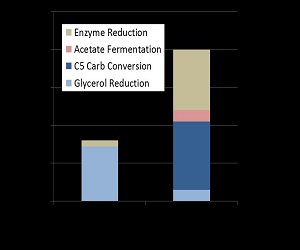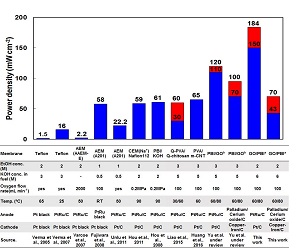Day 2 :
Keynote Forum
Ajit Sapre
Reliance Industries, India
Keynote: Biofuels and bio-chemicals: One perspective
Time : 09:00-09:30

Biography:
Abstract:
Keynote Forum
Majid Hosseini
The University of Texas Rio Grande Valley, USA
Keynote: Technical challenges of large-scale microalgae harvesting for feed, food, and biofuels production
Time : 09:30-10:00

Biography:
Dr. Hosseini has earned both his PhD and MS degrees in Chemical Engineering from the University of Akron, in Ohio, USA. He has also completed an MSE degree in Manufacturing Engineering at UTRGV in Texas, USA, and a Bachelor’s degree in Chemical Engineering at Sharif University of Technology in Tehran, Iran. Dr. Hosseini has edited book and book chapters, co-invented patents application technologies, and authored multiple peer reviewed research articles. He has served as a key speaker at national and international conferences and meetings and has been actively engaged in technology development. He is a persistent reviewer of leading international journals.
Abstract:
Presently, commercially produced microalgae are used in supplemental nutritional products for humans and animals. There is a great potential for microalgae to be used in food/feed supplements, biofuels production, electricity generation, carbon dioxide biofixation, etc. Throughout the world, many variations on cultivation methods, species of microalgae, harvesting means and the biomass processing technology have been implemented. Even though microalgae biomass has been rigorously studied in both the laboratory and in the field for years, its usefulness is impeded by the difficulty experienced in its large scale cultivation thereby making it commercially infeasible. Nevertheless, there are multiple issues that must be addressed before the widespread adoption of algal biomass production technology. Several species are already being used commercially in raceway ponds, but are still not produced in high enough quantities or in a cost effective manner that is required for fuels and feeds. While algae biomass demand continues to increase globally, producers require technological developments that drive cost reduction while retaining and elevating the quality of the product. Low cost, efficient and scalable harvesting and subsequent dewatering methods require technological advancement in order to drive cost reduction of downstream processing and ultimately biofuel production. The favorability of the carbon and energy balance is what determines the microalgae feedstock’s viability for the production of biofuel. In order to achieve large-scale production levels, not only must processing costs be drastically cut, but more importantly is the development of algae strains that are highly productive and can be cheaply harvested. The systems used for the identification, promotion and utilization of algal biomass are sought after by producers and processors alike so as to ensure profitability, supply security, eco-consciousness, sustainability, market competitiveness, and etc. This work detailed the challenges that microalgae biomass production and utilization face which span the breadth of the algal production chain. Constraints, both chemical and physical in nature, that obstruct mass production and application of large scale algal biomass is also addressed herein. Comparisons between various microalgae harvesting methods and their potential for scalability are discussed. Furthermore, a discussion on the technical, economic and environmental barriers that must be surmounted prior to the introduction of microalgae-based products into the global market is presented.
Keynote Forum
Ange Nzihou
Centre RAPSODEE, France
Keynote: Innovative catalysts for the conversion of greenhouse gases (CO2 and CH4) from biowastes to energy and chemical
Time : 10:00-10:30

Biography:
Abstract:
Networking & Refreshment Break 10:30-10:40 @ Foyer
Keynote Forum
Wei-Hsin Chen
National Cheng Kung University, Taiwan
Keynote: Recent progress in torrefaction for upgrading solid biomass fuels
Time : 10:40-11:10

Biography:
Abstract:

- Entrepreneur investment meet | Special session |
Location: Dorothy

Chair
Malgorzata Slupska
POET, USA
Session Introduction
Malgorzata Slupska
POET, USA
Title: Advances in the commercial ethanol production
Time : 11:10-11:30

Biography:
Abstract:
Jason Bootsma
Flint Hills Resources, USA
Title: Innovation at Flint Hills Resources
Time : 11:30-11:50

Biography:
Abstract:
Brooks Henningsen
Mascoma LLC, USA
Title: Improving first and second generation ethanol production with biotech yeast
Time : 11:50-12:10

Biography:
Abstract:

Herman Pel
DSM, Netherlands
Title: Optimizing enzyme cocktails and process conditions for production of cellulosic ethanol
Time : 12:10-12:30

Biography:
Abstract:
Sarah Teter
Novozymes, USA
Title: Customized enzymes and robust yeast- Novozymes’ solutions for cellulosic biorefineries
Time : 12:30-12:50

Biography:
Abstract:
Lunch Break: Lunch Break 12:50-13:30 @ Foyer
- Advnaced biofuels | Biorefineries | Bioethanol
Location: Dorothy

Chair
Wolfgang Bauer
Michigan State University, USA

Co-Chair
Kesen Ma
University of Waterloo, Canada
Session Introduction
Wolfgang Bauer
Michigan State University, USA
Title: Comparison of bio-ethanol and biogas: Net energy ratio, total yield, and greenhouse gas emissions
Time : 13:55-14:15

Biography:
Abstract:

Daniel thran
Helmholtz Centre for Environmental Research (UFZ), Germany
Title: Biofuels between manifold expectations - How to assess their potential for sustainable transportation?
Time : 14:15-14:35

Biography:
Abstract:
Shingjiang Jessie Lue
Chang Gung University, Taiwan
Title: Direct ethanol fuel cell performance using polyzenzimidazole/graphene oxide nanosheets electrolyte membrane
Time : 14:35-14:55

Biography:
Abstract:

Ian Rowe
U.S. Department of Energy, USA
Title: Engineered carbon cycling strategies for advanced net-zero carbon Biofuels

Biography:
Abstract:
Leandro Soter de Mariz e Miranda
UFRJ, Brazil
Title: Making a bridge between biomass and hydrocarbon in a standard refinery
Time : 14:55-15:15

Biography:
I Graduated in Pharmacy in 2001 and obtained my PhD in 2007 working on the synthesis of natural products. After obtaining my PhD I moved to the Pharmochemical Industry to work on the P&D department in nucleoside chemistry, searching for new synthetic strategies for the synthesis of clinically important nucleosides. In 2011 I Joined the Federal University of Rio de Janeiro and an assistant Professor. In 2011 I went to the University Of Cergy-Pontoise, France, as an Invited Professor to work on Nucleosides against HCV. My research interests are Biocatalysis, Nucleoside and Carbohydrate Chemistry. In 2012 the interest on carbohydrate chemistry led me to work with Lignocellulosic Biomass, in a project with the aim to transform it, in order to allow its introduction into the FCC Unit for the synthesis of green hydrocarbons.
Abstract:
Wensheng qin
Lakehead University, Canada
Title: Effective microbial production of 2,3-butanediol from Biodiesel derived crude glycerol
Time : 15:35-15:55

Biography:
Abstract:

Networking & Refreshment Break 15:55-16:05 @ Foyer
Kesen Ma
University of Waterloo, Canada
Title: Thermostable pyruvate decarboxylases are key enzymes in the alcohol fermentation at high temperatures
Time : 16:05-16:25

Biography:
Abstract:

Nuwan Sella Kapu
University of British Columbia, Canada
Title: Bamboo: A fast-growing feedstock for a biorefinery
Time : 16:25-16:45

Biography:
Abstract:
Franklin Kalu
Heriot-Watt University, UK
Title: The potential black liquor has to improve the sustainability of kraft process if used as feedstock for kraft biorefinery
Time : 16:45-17:00

Biography:
Abstract:
Amanpreet Singh
Engineers India Limited, India
Title: India BioFuel industry- Challenges, Opportunities and business strategies
Time : 17:00-17:15

Biography:
Abstract:
Funmilayo Faloye
University of KwaZulu-Natal, South Africa
Title: Microwave-assisted organic acid pretreatment of starch based agro-residue: Assessment of fermentable sugar and bioethanol production
Time : 17:15-17:30
Biography:
Abstract:
M Ali Mandegari
University of Stellenbosch, South Africa
Title: Fossil fuel co-combustion of lignocellulosic sugarcane biorefineries: Techno-economic analysis (TEA) and life cycle assessment (LCA)
Time : 17:30-17:45

